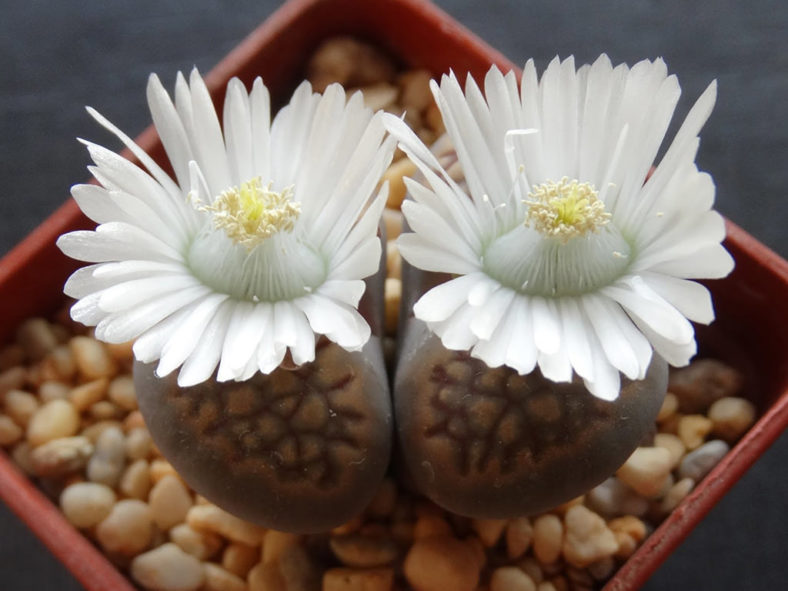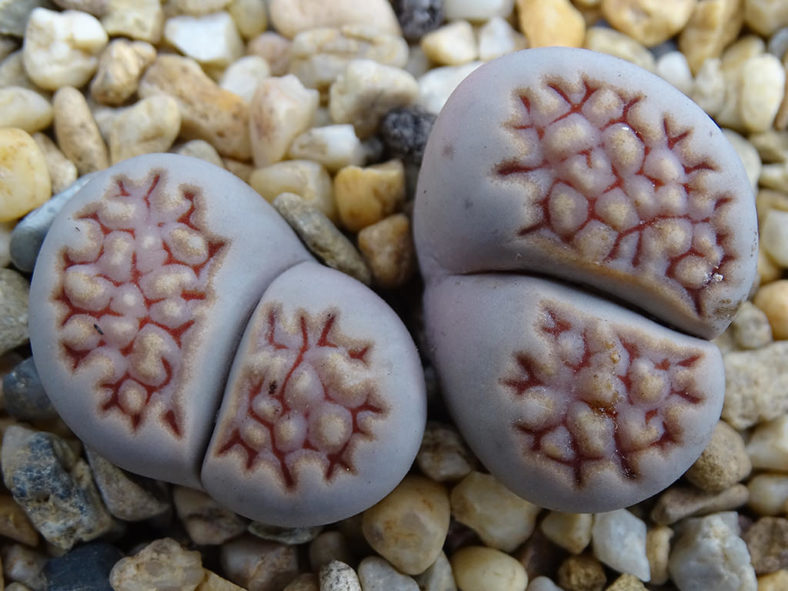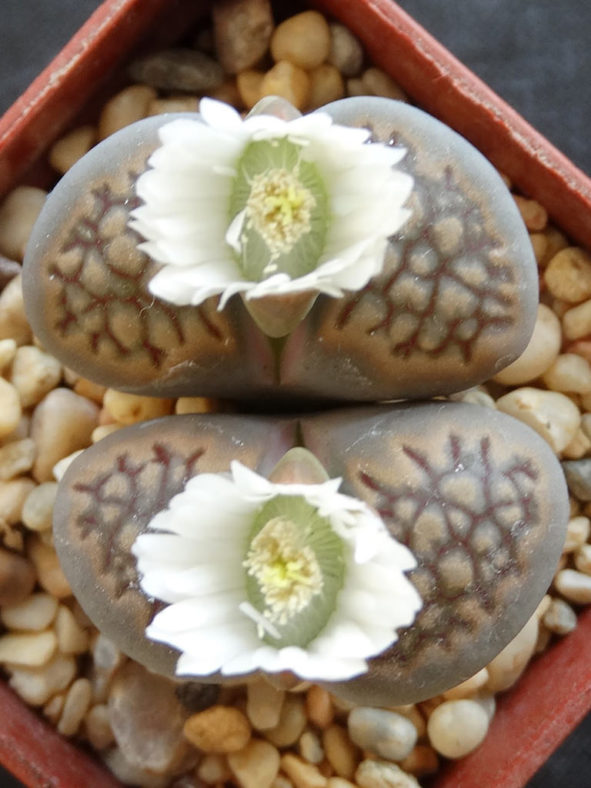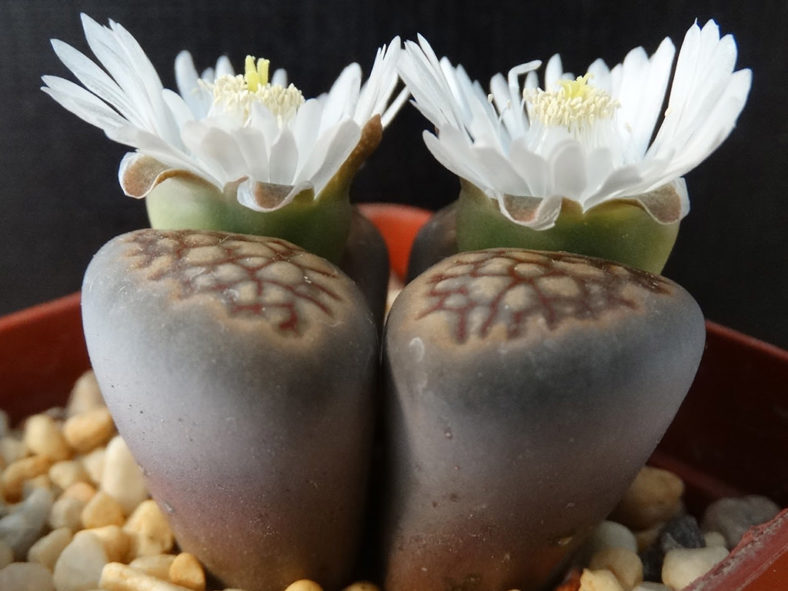Scientific Name
Lithops hallii DeBoer
Common Name(s)
Living Stones
Synonym(s)
Lithops fulleri var. ochracea, Lithops hallii var. hallii, Lithops salicicola var. reticulata, Lithops salicola var. reticulata
Scientific Classification
Family: Aizoaceae
Subfamily: Ruschioideae
Tribe: Ruschieae
Genus: Lithops
Etymology
The specific epithet "hallii (HALL-ee-eye)" honors Harry Hall (1906-1986), a British-born horticulturist, botanist, and succulent plant authority.
Origin
Lithops hallii is native to South Africa. It mostly grows on stony flats in gravelly soil in the Northern Cape province.
Description
Lithops hallii is a dwarf succulent with bodies that consist of two thick, fleshy leaves in various shades of reddish-brown. It forms a small clump of usually 2 or 3 bodies and is one of the most variable white flowering species. The leaves are flat, sometimes slightly convex at the top, with an interlacing network of red to brown channels and irregularly dentate margins. The upper surface of the body is kidney-shaped, measuring up to 2 inches (5 cm) long and 1.2 inches (3 cm) wide.
The white flowers appear in fall from the fissure between the leaves. They can reach up to 1.8 inches (4.5 cm) in diameter. The fruits are boat-shaped, usually 6-loculed capsules with yellow-brown seeds. They can grow up to 0.4 inches (1 cm) long and 0.25 inches (0.6 cm) wide.

How to Grow and Care for Lithops hallii
Light: A sunny windowsill where the plant receives 4 to 5 hours of direct sunlight during the early part of the day and partial shade during the afternoon is the perfect spot to grow your L. hallii. You may place the pot on the balcony or in the garden from spring to fall.
Soil: L. hallii thrives best in a growing medium that will drain quickly. Use a commercial soil mix for succulents, or make your own.
Temperature: High temperatures are not a problem for this plant as long as there is plenty of fresh air, but it is not a cold-hardy succulent. L. hallii can withstand temperatures as low as 30 °F (-1.1 °C). USDA Plant Hardiness Zones 10a to 11b, 30 to 50 °F (-1.1 to 10 °C).
Watering: Like all Lithops, this succulent has a specific yearly cycle of growth, and it is important to water only during certain stages, but it is also important to keep the soil dry at other stages of its growth. How often you need to water your L. hallii depends on how quickly the potting mix dries out. It is essential to let the soil dry out between waterings. Stop watering during winter to allow the old leaf pair to dry out and the new pair to develop.
Fertilizing: L. hallii does not need to be fertilized. It will thrive without any feeding. If you feed, use a high potassium and low nitrogen levels fertilizer.
Repotting: This small succulent will stay in the same pot for several decades. The common reason for repotting is dividing the plant or allowing space for clusters to grow. Repot only when its growing season starts.
Propagation: L. hallii is most often grown from seeds. If you have a multi-headed plant, it can also be propagated by division. Sow the seeds during the summer.
Learn more at How to Grow and Care for Lithops.
Toxicity of Lithops hallii
L. hallii is non-toxic and safe to have around children and pets.
Links
- Back to genus Lithops
- Succupedia: Browse succulents by Scientific Name, Common Name, Genus, Family, USDA Hardiness Zone, Origin, or cacti by Genus
Photo Gallery
Click on a photo to see a larger version.


